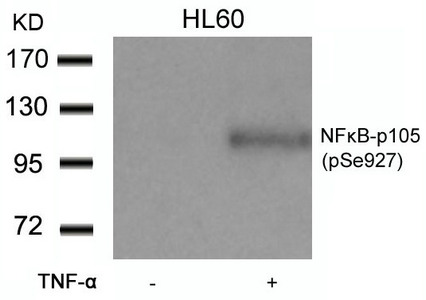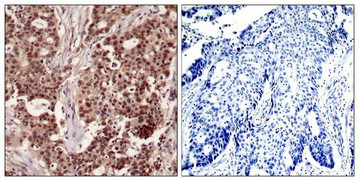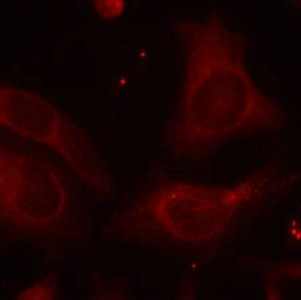
Western blot analysis of extracts from HL60 cells untreated or treated with TNF-a using NFkB-p105(Phospho-Ser927) Antibody.
Phospho-NFKB1 (Ser927) Antibody
CSB-PA283590
ApplicationsImmunoFluorescence, Western Blot, ELISA, ImmunoHistoChemistry
Product group Antibodies
ReactivityHuman, Mouse, Rat
TargetNFKB1
Overview
- SupplierCusabio
- Product NamePhospho-NFKB1 (Ser927) Antibody
- Delivery Days Customer20
- ApplicationsImmunoFluorescence, Western Blot, ELISA, ImmunoHistoChemistry
- CertificationResearch Use Only
- ClonalityPolyclonal
- ConjugateUnconjugated
- Gene ID4790
- Target nameNFKB1
- Target descriptionnuclear factor kappa B subunit 1
- Target synonymsCVID12; DNA-binding factor KBF1; EBP-1; KBF1; NFkappaB; NF-kappaB; NF-kappa-B1; NF-kappabeta; NF-kB; NF-kB1; NFKB-p105; NFKB-p50; nuclear factor kappa-B DNA binding subunit; nuclear factor NF-kappa-B p105 subunit; nuclear factor NF-kappa-B p50 subunit; nuclear factor of kappa light polypeptide gene enhancer in B-cells 1
- HostRabbit
- IsotypeIgG
- Protein IDP19838
- Protein NameNuclear factor NF-kappa-B p105 subunit
- Scientific DescriptionNF-kappa-B is a pleiotropic transcription factor which is present in almost all cell types and is involved in many biological processed such as inflammation, immunity, differentiation, cell growth, tumorigenesis and apoptosis. NF-kappa-B is a homo- or heterodimeric complex formed by the Rel-like domain-containing proteins RELA/p65, RELB, NFKB1/p105, NFKB1/p50, REL and NFKB2/p52 and the heterodimeric p65-p50 complex appears to be most abundant one. The dimers bind at kappa-B sites in the DNA of their target genes and the individual dimers have distinct preferences for different kappa-B sites that they can bind with distinguishable affinity and specificity. Different dimer combinations act as transcriptional activators or repressors, respectively. Hou S, et al. (2003) J Biol Chem. 278(46): 45994-45998. Baeuerle P A, et al. (1994) Annu Rev Immunol. 12:141-179. Baeuerle P A, et al. (1996) Cell 87:13-20. Haskill S, et al. (1991) Cell 65:1281-1289.
- ReactivityHuman, Mouse, Rat
- Storage Instruction-20°C or -80°C
- UNSPSC12352203


